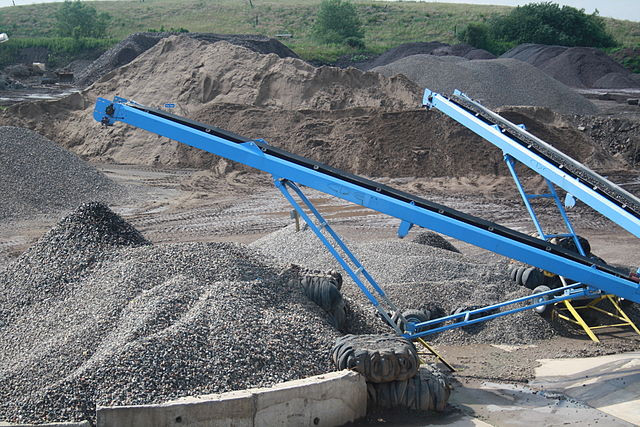
Caledon mayor vows council will deny application for 800-acre blasting quarry; so what happens next?
Caledon Mayor Annette Groves has made a pledge to the west-Caledon community that all nine members of council will stand against the proposal for a blasting quarry in Cataract from Canada Building Materials, a subsidiary of the Brazilian cement giant Votorantim Cimentos.
The vow, made by the Mayor during a meeting of the Forks of the Credit Preservation Group (FCPG) on April 18, was not enough to ease the minds of residents who felt blindsided by the lack of transparency surrounding the application.
But now, with a fresh pledge from Town staff to increase public awareness of the project, coupled with the promise from Mayor Groves that council will vote the application down, some residents are feeling encouraged.
The fight, however, is far from over.
Even with expertise and experience on their side—two lawyers working with the Town have an impressive record of winning successful battles against aggregate applications—the deck is still heavily stacked in favour of Votorantim.
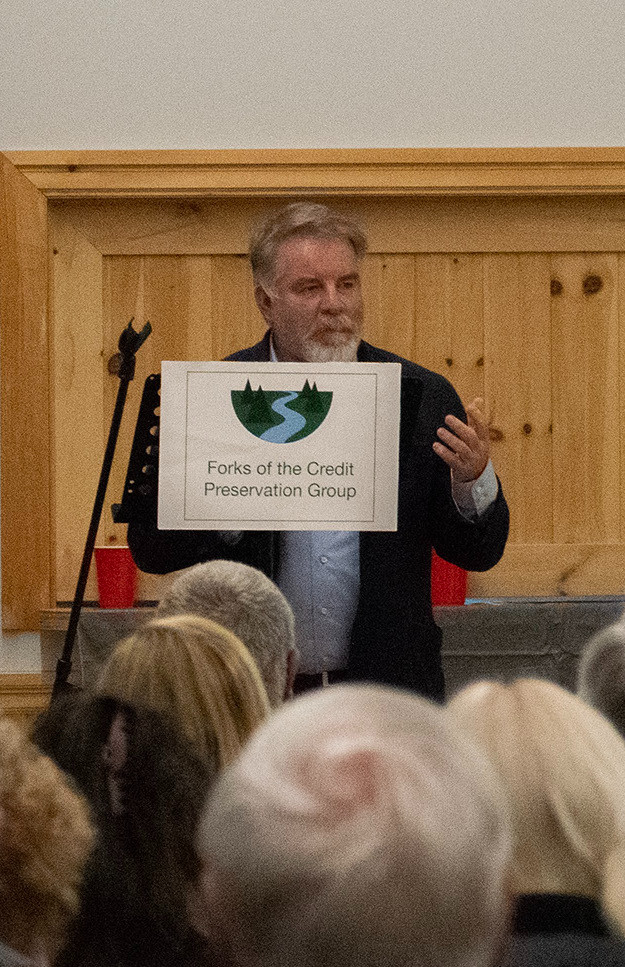
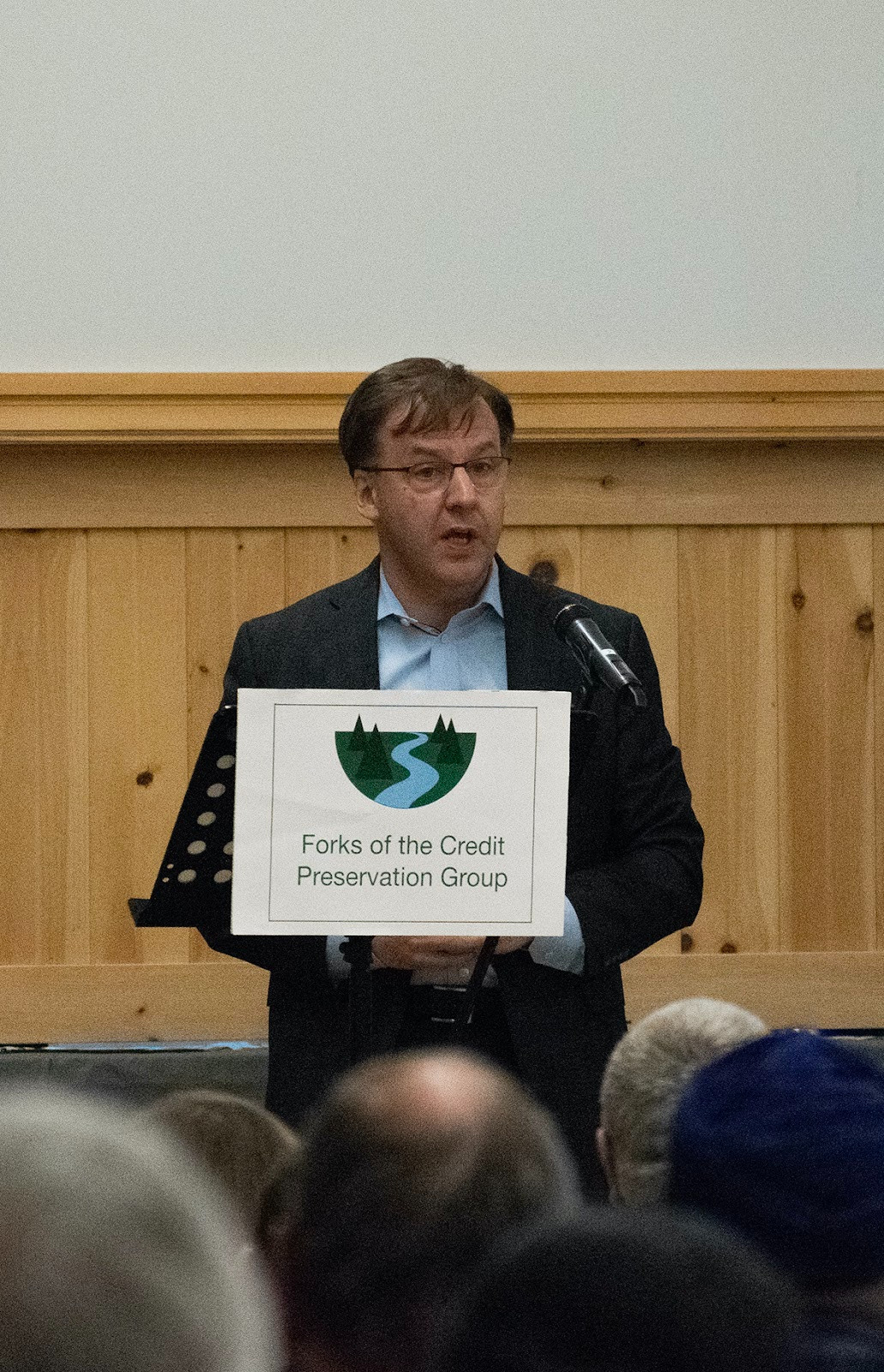
David Donnelley (left), legal counsel for the Forks of the Credit Preservation Group, and Chris Barnett (right), legal counsel for the Town of Caledon, are two of the few environmental lawyers in Ontario who have fought a quarry and won.
(Alexis Wright/The Pointer)
“Chris Barnett [legal counsel for the Town of Caledon] and I are two of the few lawyers, there might be only five or six of us in the entire province that have ever fought a quarry and won,” David Donnelley, one of Canada’s foremost environmental lawyers representing the FCPG in the fight against the Cataract quarry, said at the meeting. “I suppose that looks good on me, but it doesn't because I have lost almost every court case that I've ever taken on and so has he, and so has every other lawyer in the province of Ontario. Why that is, is because the policy regime [surrounding the aggregate industry] is absolutely terrible in this province.”
Currently, the Town is faced with Planning Act applications asking for an Official Plan amendment and Zoning Bylaw amendment. In February 2022, Town staff met with the applicants to discuss the contents of the application. Final versions were submitted to the Town in December 2022. This was despite Caledon having an interim bylaw in place prohibiting the approval of any new aggregate applications until October of this year. Many residents were surprised to see the project moving forward, but under the Planning Act, the municipality must continue to process applications. It does not mean they will be approved.
The Official Plan amendment is a request to redesignate the site from agricultural lands, rural lands and environmental policy area to extractive lands to allow for the quarry to move forward. The Zoning Bylaw amendment reaffirms this change by rezoning the lands from the purpose of agricultural to extractive industries.
The application for the blasting quarry was deemed complete on March 23. “Complete” simply means all of the studies and necessary reports associated with the application are now in place. According to the Planning Act, a municipality has 120 days from when an application is deemed complete to make a decision. If a decision is not made in this timeframe, the applicant has the right to make an appeal. But Town staff stressed that these evaluations often take longer as they are dealing with a lot of studies and factors including environmental protections, noise and air pollution, and blasting impacts.
“It's important to note that the Town, and its experts, must spend the time evaluating the applications and then provide professional evidence based recommendations to council,” Antoinetta Minichillo, chief planner and director of planning at the Town of Caledon, said. “The Town will of course notify interested parties — those on the notification list — of any staff reports being brought forward on this matter.”
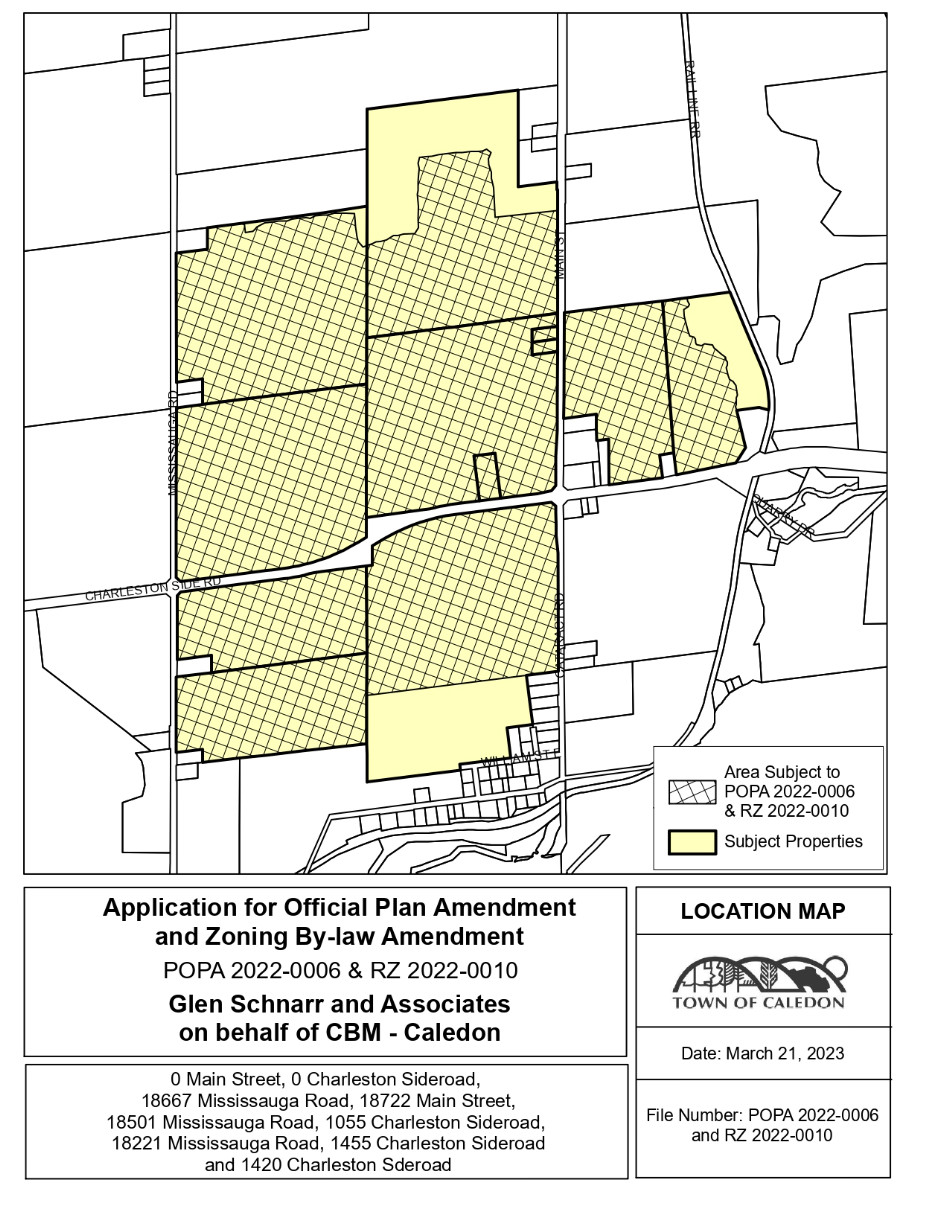
The blasting quarry will cover 800 acres in Cataract where the lands are currently zoned for agricultural and environmental protection purposes.
(Town of Caledon)
Mayor Groves has suggested that council will not support the quarry regardless of the recommendation that comes back from staff. A rejection by council does not put an end to the process indefinitely.
“If [the municipality] denies it, then the applicant can appeal to the Ontario Land Tribunal (OLT) to overturn that decision, in other words to get a tribunal to adopt the OPA and a ZBLA,” Donnelley told The Pointer.
David Hanratty, director of land, resource and environment for Votorantim Cimentos North America, told The Pointer that CBM hopes, at all costs, the OLT can be avoided.
“It is our goal to ensure their concerns are addressed to the best of our ability prior to any decisions having to be made about the Official Plan and Zoning Bylaw,” he said.
But there is another application that is in the hands of the Province. The Ministry of Natural Resources and Forestry is responsible for administering a licence under the Aggregate Resources Act in order for an aggregate company to be able to legally operate in a given area.
“On April 6, 2023, the Town was informed that the applicant has submitted the required Licence application to the Ministry,” the page for the CBM application on the Town’s website states. “The Ministry has directed the applicant to initiate public notice of the licence application in accordance with the Ministry’s requirements.”
The process of the licence application is separate from the Planning Act application handled by the municipality. The municipality can deny the Official Plan and Zoning Bylaw Amendments, but has no role in the licensing process under the Aggregate Resources Act.
In the case where an appeal is filed, the OLT will process the application before assigning a tribunal member to conduct a Case Management Conference (CMC). The purpose of the CMC is to provide a status update on the parties and the status of the licensing request.
Once the CMC is complete, the tribunal conducts a procedural order to establish how the appeal will proceed in a given timeframe. The first step is gathering a witness list, witness statements and visual exhibits. They then will require an issues list which will lay out all of the aspects of the application that will be argued — for example: noise pollution, flyrock, transportation haul route, hydrogeology, etc.
“Sometimes they are very narrow: is noise going to be a problem? And that's it,” Donnelley said. “Sometimes it's everything: noise, dust, natural heritage, endangered species, Species at Risk, hydrogeology, blasting safety, archaeology … the issues list is like, what are we going to deal with here where we have to decide?”
For each aspect on the issues list, all parties will have an expert to make their case. The general rule is that each expert will have one day to present their case. In the case of the CBM application, Donnelley anticipates that there would be about seven issues on the issues list, with an expert representing CBM, the Town of Caledon and the FCPG for each issue. With opening and closing statements, he estimates this could be about a 25-day hearing.
He said that a five-week hearing wouldn’t happen for at least a year.
The policies at play at the provincial level are tilted heavily in favour of the aggregate industry, often making it difficult for municipalities and community groups to stop pits and quarries from ripping up the earth within their boundaries. Despite an increase in population growth, advocates point out that Ontario has been using relatively the same amount of aggregate every year over the past decade. Despite this, the aggregate industry is licensed to extract 13 times more material each year than the province actually uses.
And the number of aggregate licences granted is only increasing. According to data from the Reform Gravel Mining Coalition, licences for gravel extraction have increased from 183,000 acres in 1992 to 333,000 acres in 2020. This proliferation is largely due to a principle within the Provincial Policy Statement (PPS) that is often used by the aggregate industry to fight off attempts to stop proposals.
The no need to show need policy is unique to the aggregate industry. Where other land use industries such as housing, waste management and industrial uses are required to prove why their land-gobbling operations are necessary, for the gravel industry “demonstration of need for mineral aggregate resources, including any type of supply/demand analysis, shall not be required,” the PPS states.
“They're just a very successful industry, in terms of not being very closely regulated, they kind of fall between the cracks,” Donnelley said. “With aggregate, it's sort of treated as like ‘we need it so we got to have it, so give it to us.’”
This has left Ontario in a situation where there is far more aggregate supply than there is demand.
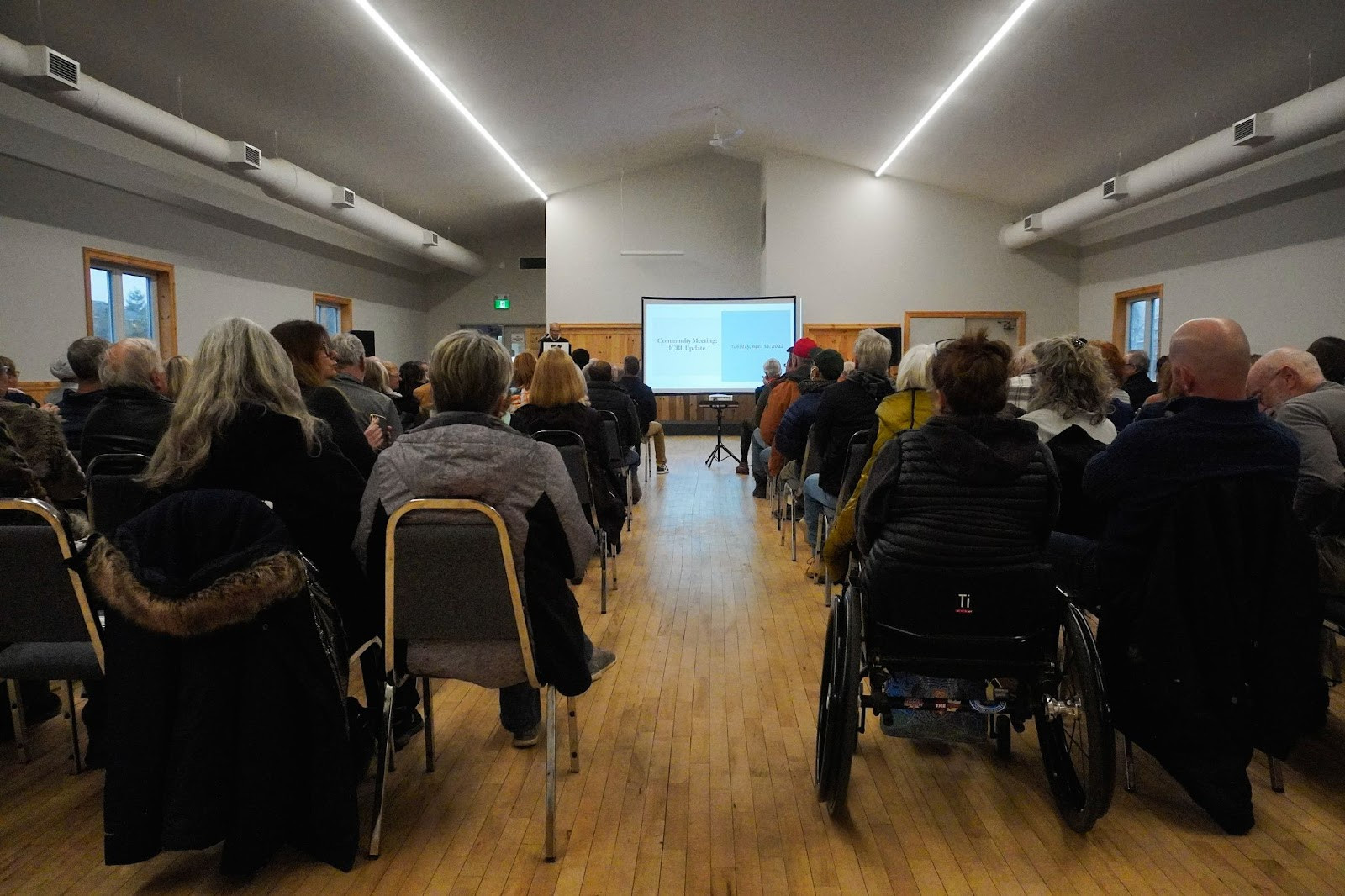
The number of residents who have banded together in opposition to the CBM quarry is anything but small. Donnelley said he has faith the citizens’ interests will prevail.
(Alexis Wright/The Pointer)
But despite the policies leaning in favour of the industry, Donnelley has hope for the residents of Caledon that the CBM quarry can be stopped. He says the Town can use the time it has under the ICBL to strengthen its aggregate policies to ensure safety and environmental regulations are paramount. He noted that, while there are very few lawyers in Ontario who have fought quarries and won, it can happen. One example of this is right in Caledon.
In the early 2000s, the Town fought the Rockfort Quarry by James Dick Construction Ltd. in southwest Caledon. After the Town denied the application, James Dick appealed to the OLT, which sided with the Town and did not allow the quarry to proceed.
Promising policies are also appearing elsewhere. Josh Matlow, a candidate for mayor in the Toronto mayoral by-election is running on a strong green platform which includes bringing together a Greenbelt Leaders Council that will work with the federal government to protect the Greenbelt from development including boycotting the purchase of sand and gravel from pits and quarries in the Greenbelt.
But Donnelley said the most encouraging sign is the citizens in Caledon who have shown they are not ready to stand down to the aggregate giants.
“Most citizens down there are very sophisticated, energetic people. And it looks like they are going to do a terrific job organizing the community, raising money, hiring experts, they're going to put out a good case. People do beat quarries,” he said. “And this to me looks like a really good case for the citizens to emerge victorious.”
Email: [email protected]
Twitter: @rachelnadia_
At a time when vital public information is needed by everyone, The Pointer has taken down our paywall on all stories relating to the pandemic and those of public interest to ensure every resident of Brampton and Mississauga has access to the facts. For those who are able, we encourage you to consider a subscription. This will help us report on important public interest issues the community needs to know about now more than ever. You can register for a 30-day free trial HERE. Thereafter, The Pointer will charge $10 a month and you can cancel any time right on the website. Thank you
Submit a correction about this story


